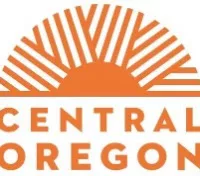
In a report and accompanying dataset released last week, the Oregon Health Authority (OHA) shows that in 2019 commercial insurers paid Oregon hospitals double what Medicare paid for the same services. The weighted average shows hospitals were paid 178% of the comparable Medicare fee-for-service (FFS) rate for inpatient hospital services and 247% for outpatient hospital services. This means employer-sponsored plans pay far more for hospital services, which costs businesses more in premiums, and costs people more in deductibles, co-pays and other out-of-pocket expenses.
“The pandemic has shown how critical it is for every person in Oregon to have affordable health insurance that allows them to access the care they need, when they need it,” said Jeremy Vandehey, Director of the Health Policy and Analytics division of OHA “Unfortunately, costs are too high for too many. This data and analysis supports our work to create transparency on health care costs so we can collectively understand where in the system costs are high and what can be done to address them.”
The high costs of health care in Oregon result in significant impact to patients. Related patient out-of-pocket costs such as deductibles and co-payments have grown alongside overall costs. For instance, the average deductible for a single person in Oregon was $1,958[1] in 2019 and has grown by 51% since 2013. And because of higher prices and cost-sharing policies, people with commercial health insurance often bear a higher out-of-pocket burden than those on Medicare.
The report notes that according to the Oregon Health Insurance Survey, almost half (49.3%) of people in Oregon receive their health insurance from a private, employer-sponsored health care plan. [2] Nationwide, among those that are privately insured, hospital care accounts for 36% of all health care expenditures.[3]
“Only a few states are conducting this sort of in-depth analysis of the pricing of health care,” said Rachel Block, Program Officer, Peterson-Milbank Sustainable Health Care Costs Program. “We have national-level data showing these disparities, but it has to get down to the local level to be actionable. Variations between health care markets can mean hundreds of millions of dollars in additional health care spending. We also need a better explanation of why prices differ so much for the same services. Understanding the realities of health care cost drivers, including price variation, is the first, and best step, towards bringing the cost of health care down. Kudos to Oregon for taking this vital step, which will help the state achieve its health care cost growth target.”
“Truly understanding the pricing and cost nuances in the health care system is a meaningful step towards disrupting steadily increasing health care costs,” said Maureen Hensley-Quinn, Senior Program Director of the National Academy for State Health Policy. “We are excited about Oregon’s report and support all states in analyzing health costs and publicly sharing the results. This sort of analysis – leveraging the state’s own data out of its all payer all claims database – is critically important to understand otherwise opaque costs in state. Now we have a much clearer understanding of how hospital pricing changes in Oregon depending on who is paying.”
The price disparities in the report translate to an additional $221 million paid by commercial insurance companies above the Medicare FFS rate for the inpatient procedures examined in this report, and an additional $400 million paid for outpatient procedures.
“The better our data are on the true drivers of health care costs, the better our collective ability to address them. You can’t solve what you can’t analyze,” added Mr. Vandehey. “We believe this type of analysis may help hospitals, payers, and employers identify opportunities for cost containment to achieve Oregon’s cost growth target.”
For this report, OHA analyzed the state’s All Payer All Claims (APAC) data from 2019 and derived median paid amounts for 39 inpatient procedures and 86 outpatient procedures for both the commercial insurance market and the Medicare fee-for-service market. Paid amounts for procedures were then weighted by frequency to create an overall weighted average paid amount for inpatient and outpatient services in both the commercial and Medicare fee-for-service markets.
The data in this report, commercial prices and percentage of Medicare payments for specific inpatient and outpatient hospital procedures, can be explored in this online dashboard.
Since 2015, OHA reports annually on the median amount paid by private insurance plans for the most common hospital inpatient and outpatient services resulting in the Oregon Hospital Payment Report. That data can be accessed here: https://www.oregon.gov/oha/















